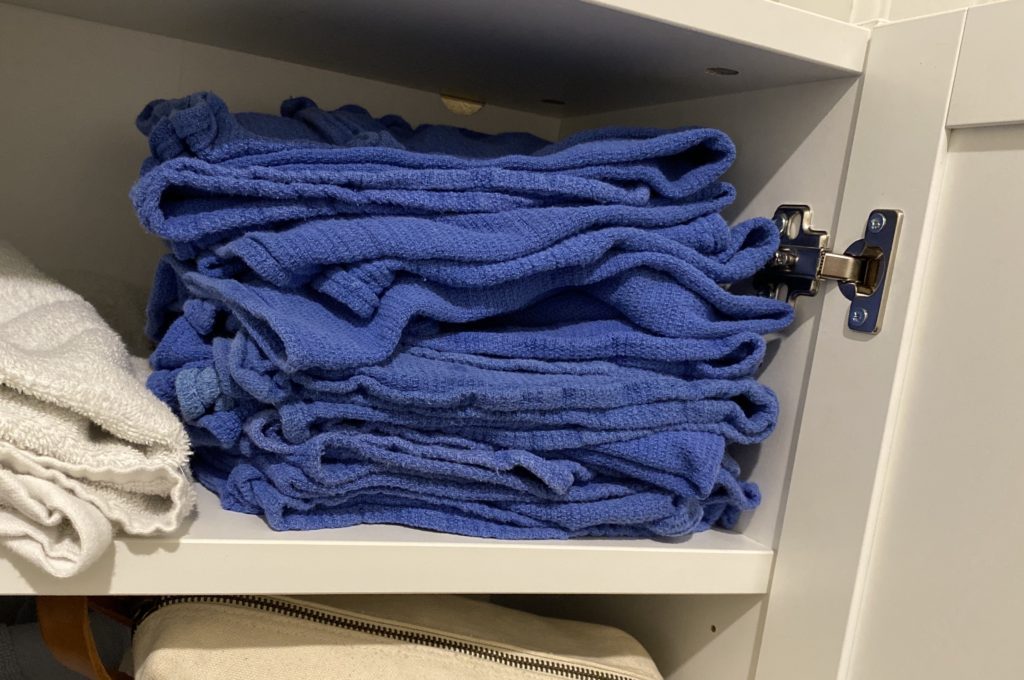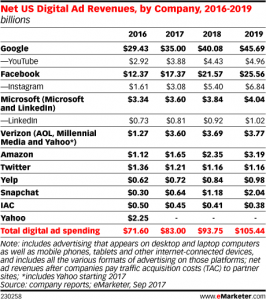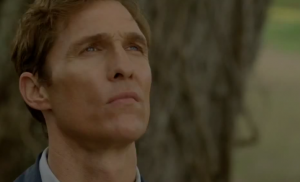If you (or someone you know) is expecting a newborn I can already predict that their baby registry is packed to the gills with ironic onsies found on Instagram and useless organic baby bath salts. What’s NOT on the registry are these five things. And these five things are the dad gifts that will actually be useful to your expecting father friend.
These items are weird. In fact, if you put them on your baby registry, your relatives will be perplexed. And yet I’ve found them absolutely indispensable after 6 weeks taking caring for a newborn baby. These 5 purchases were essential to my newly-“dadded” man-brain and they were absolutely overlooked by Blake Lively or whatever blogger’s top ten gifts for dad list, so that’s why I’m sharing them here.
1. 50X Blue Surgical Huck Towels

By far and away the most useful thing in our entire household for 6 weeks straight has been all 50 of these simple reusable surgical huck towels. What the hell are surgical huck towels? They’re basically just uber cheap towels the use in the ER. This may seem straightforward so stay with me for a few paragraphs…
The idea of using a towel completely changes when you have 50 of them. When you just depend on the dozen or so “burp towels” you might get in a few gift baskets, you’ll subliminally limit your usage to just the dozen. When you feel like you have infinite towels, you will finally. be. FREE.
And you are going to need infinite towels. Towels for messes. Towels to protect areas from messes. Towels to cover up areas already covered in messes.
Basically, every time you do something with a newborn, you should start first by laying down a towel to contain whatever hazmat they might inflict on your world. When you have 50 of them, you’ll keep them in every basket, cabinet and drawer within arms reach of baby activity. Use them like paper towels, only they’re washable, soft and reusable.
2. Mini “Button Lamp” LED Lights
You will be amazed as how critical light management is. Even the slimmest shaft of light from the crack of a doorway will startle awake the little one you just spent hours shushing to sleep. So, your job as a dad is to create very simple and non-disruptive lights for essential tasks that take place late at night.
Your old man used motion-activated night lights. The best new solution are these simple mountable LEDs with a basic switch. LEDs are so low-power that they don’t need a wall socket so you can affix them anywhere — both discreet and right where you need it.
These are surprisingly bright for a single-bulb running on a hearing aid battery. You’ll want to stick it in a hidden-away spot both for aesthetics and because it’ll help your light “bounce” more softly into the right position.
These are both your “oh shit” lights and your crucial partners during regular nighttime chores. Here are the essential places we plunked them:
- In the master bathroom so you can sneak in to pee without lighting up the whole room
- Right next to the crib for emergency spit-ups
- Above either side of the bed so that we can feed her at night without waking her too much
- Behind the changing table because sometimes you can’t quite see if things down there are clean
- Above the kitchen sink because you’ll be washing bottles, pumps and pacifiers at all hours
3. Temporary blackout shades
For like $5 each, you can buy the most impervious blackout shades available and then just toss them when you’re done. These are temporary disposable ones that stick anywhere with paint-friendly masking-tape-like stick.
Like I mentioned above — you need to prevent even that slender strip of streetlight from peeking between your mini-blinds and the window sill… and on to your newborn’s face.
The master bedroom’s baja chic window treatment is not going to cut it for the next few weeks while baby co-sleeps. Dad’s going to have to buck up for this temporary fix in a few rooms. Just layer them over the terrible light leaks. It’s a little ghetto but you’ll only need it till she sleeps in a more permanent place.
4. Hatch devices — more importantly, their app
My wife and I got on the Hatch train much too late for their epic smart scale to come in handy… I remember thinking, who the hell would want to weigh their baby so frequently? Well, new parents quickly learn how crucial the newborn’s weight can be to their happiness and sound sleep.
You can do two things with a baby’s weight: 1) get a sense of generally how long they can go between feeds because a heavier baby sleeps longer (in other words: estimate how long you can sleep without interruption) and 2) find out how much they’ve actually eaten on a given breastfeeding session (by weighing them before and after).
Another key: The Hatch App
Even if you’re not using the Hatch tech (we also like their sleep light) everyone can benefit from using the Hatch app — and it’s free. You can track everything from diaper usage, weigh-ins at the doctor’s office, nap times and feeding durations. What gets measured gets managed! And you’ll like managing your baby’s stats for two main reasons:
- COMMUNICATION – You, your partner and (God willing) some other helper/relative will all be caring for this baby. It helps enormously with communication if all parties know when the most recent diaper change happened or how long the last nap was. For instance, late at night, if one partner skips a diaper change, when then next partner wakes, they can just see on the dashboard what happened rather than waking their snoozing friend.
- ANALYSIS – Maybe, just maybe… you can begin to read the tea leaves of the child’s schedule, detect patterns and better diagnose the troubles that ail them and cause all the fuss and crying. Good luck with this one but sometimes we’ve had epiphanies looking at the “Schedule” tab. If anything, it will help you estimate the number of diapers to order on Amazon.
5. IKEA smart lighting with Alexa
Okay, I’m back on the lighting thing! But this is less about maintaining the oh-so-important mood lighting in your home and more about being hands-free.
When you’re angrily hot-stepping across your home with a flailing baby in your arms, it’s a huge win if you can plop her on the changing table, grab a wipe in one hand, a diaper in the other and holler “Alexa, turn on the lamp!” If a stubborn child is growing drowsy in the perfect position in your arms, you can hands-free ask Alexa to turn on white noise to further lull her… or your favorite podcast to lull you!
I’ve found IKEA’s lights to be very buggy but cost-effective enough that you’ll convert nearly your whole home in a weekend. Once a new dad has an inexpensive Alexa device and a few bulbs installed in the nursery, the family is pretty much kitted-out with hands-free automation.
Still not inspired? – More Dad gift ideas
It should go without saying but please PASS on the ironic onesie or the plush corgi and if all else fails, buy your expecting dad one of these things:
- Newborn diapers
- Water wipes
- Plain white kimono/toga style shirts
- A week or two of a meal delivery service like Sun Basket
So those are the top 5 gifts I give every dad now that I’ve had a newborn myself! People will buy a new father all the other crap he needs so I’ve skipped that important junk. These 5 things will come in true handy and are at my fingertips when a new colleague or friend has a little one coming.




